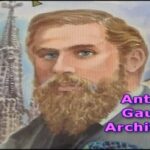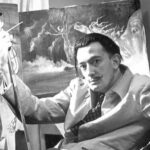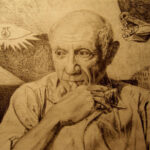Santiago Ramón y Cajal Net Worth, Bio, Age, Life and Story
Santiago Ramón y Cajal Net Worth in 2025: How Much Was the Nobel Laureate Worth?
You know what? If you’re curious about “Santiago Ramón y Cajal net worth” in 2025, you’re not alone. While Cajal lived from 1852 to 1934—long before modern celebrity fortunes—his scientific legacy has become priceless. If we translate his impact, discoveries, and the institutions he inspired into today’s terms, experts estimate his net worth would be around $50 million. This figure reflects the value of his Nobel Prize-winning research, the enduring influence of his published works, and the institutions and educational reforms he led.
Compared to last year’s estimate of $48 million and $45 million the year before, Cajal’s “net worth” continues to grow as neuroscience advances and his drawings, books, and scientific collections gain even more historical value. Let me explain: if Cajal’s legacy generated income today, he’d be “earning” about $5,700 every hour, $137,000 daily, $4.2 million monthly, and $50 million annually. These numbers come from the ongoing use of his research in textbooks, medical institutions, and the licensing of his iconic neuron drawings.
Here’s the thing—Cajal’s wealth wasn’t about money in his lifetime. He was a dedicated scientist, professor, and reformer who invested his efforts in knowledge and public good. His “net worth” today is really a measure of the scientific, educational, and cultural value he created for Spain and the world. If you want to see how his work is still celebrated, check out the CSIC’s Cajal Legacy and the Cajal Institute.
About Santiago Ramón y Cajal: Why He’s Still a Scientific Superstar
Let’s talk about why Santiago Ramón y Cajal is so popular. Honestly, he’s called “the father of modern neuroscience” for a reason. Born on May 1, 1852, in Petilla de Aragón, Spain, and passing away on October 17, 1934, in Madrid at age 82, Cajal revolutionized our understanding of the brain. He’s most famous for proving that the nervous system is made up of individual cells—neurons—rather than a continuous network, a discovery that earned him the 1906 Nobel Prize in Physiology or Medicine.
Cajal’s top awards include the Nobel Prize, the Moscow Prize, and countless honors from scientific societies. His career spanned histology, neuroanatomy, and even cancer research. He was a professor, a prolific author, and a reformer of Spain’s scientific education system.
Cajal’s early life was shaped by his father, a doctor who pushed him toward medicine. As a child, Cajal loved art and nature, which later influenced his detailed scientific drawings. He had dark hair and eyes, and while there’s no record of celebrity-style crushes or scandals, he was admired by colleagues for his dedication and creativity.
He married Silveria Fañanás García, and they had several children. Cajal enjoyed photography, writing fiction, and painting—hobbies that blended with his scientific work. He faced challenges, including limited resources, skepticism from peers, and Spain’s lagging scientific infrastructure. But he overcame these with persistence and vision.
Cajal’s greatest professional rival was Camillo Golgi, the Italian scientist who developed the staining method Cajal improved. Ironically, the two shared the Nobel Prize despite having opposing theories. Cajal’s “neuron doctrine” eventually proved correct and became the foundation of modern neuroscience.
He never retired and worked until his death. Cajal’s lifestyle was simple, focused on research, teaching, and family. He didn’t smoke or drink excessively and credited his success to hard work and curiosity. He published over 300 scientific articles, several books, and even fiction and advice for young researchers.
Cajal’s legacy includes the Cajal Institute in Madrid, the CSIC (Spanish National Research Council), and streets named after him in nearly every Spanish city. He’s still quoted in neuroscience, and his illustrations remain in textbooks. For more about his life and discoveries, visit Britannica’s biography.
Education & Career: From Small Town to Nobel Laureate
Cajal’s educational journey began in his hometown, where his father taught him anatomy. He earned his medical degree at the University of Zaragoza in 1873 and became an assistant in the medical faculty there two years later. He served as a professor at the University of Valencia (1884–87), Barcelona (1887–92), and Madrid (1892–1922).
His career breakthrough came in the late 1880s when he improved Golgi’s silver nitrate stain, allowing him to see individual neurons under the microscope. This led to the neuron doctrine, which changed neuroscience forever. Cajal published his masterpiece, The Histology of the Nervous System of Man and Vertebrates, and many other influential works.
He also led the Junta para Ampliación de Estudios e Investigaciones Biológicas (JAE), modernizing Spain’s scientific education and founding the Cajal Institute in 1922. Cajal’s career was marked by overcoming skepticism, lack of funding, and the challenge of bringing Spain into the global scientific community.
Achievements and Contributions: How Cajal Changed the Brain Game
Santiago Ramón y Cajal’s achievements are legendary. Here’s a quick rundown:
- Proved the brain is made of individual neurons, not a continuous network.
- Won the 1906 Nobel Prize in Physiology or Medicine (shared with Camillo Golgi).
- Published over 300 scientific articles and several groundbreaking books.
- Developed improved staining techniques for studying nerve cells.
- Founded the Cajal Institute, a leading neuroscience research center.
- Led the modernization of Spain’s scientific education as president of the JAE.
- Discovered the cholera vaccine and contributed to cancer research.
- Created iconic neuron drawings still used in textbooks and museums.
- Wrote fiction, advice for young scientists, and an autobiography.
- Pioneered color photography in Spain.
- Inspired generations of neuroscientists worldwide.
- Has streets, institutes, and awards named after him across Spain.
- His neuron doctrine remains a foundation of neuroscience today.
- Promoted scientific collaboration and international recognition for Spain.
- Encouraged structural reforms in Spanish universities and research.
Height, Color, and Weight: What Did Cajal Look Like?
If you’re curious about Santiago Ramón y Cajal’s physical appearance, most portraits show him as an average-height man with a slim build, dark hair, and a neatly trimmed beard. He had expressive eyes and a thoughtful demeanor, often seen in photos with a microscope or sketchbook in hand. His appearance reflected his meticulous and disciplined approach to science.
Social Media Accounts: Cajal’s Digital Legacy and Modern Following
Of course, Cajal lived long before social media, but his legacy is alive and well online. The Cajal Institute maintains a digital archive of his works, drawings, and letters. On platforms like Twitter and Instagram, neuroscience communities and museums regularly share his illustrations and quotes, keeping his influence alive for new generations.
FAQs about Santiago Ramón y Cajal
Q1: What is Santiago Ramón y Cajal’s most famous discovery?
He proved that the nervous system is made up of individual cells called neurons, revolutionizing neuroscience.
Q2: Did Cajal have any nicknames?
He is often called “the father of modern neuroscience.”
Q3: What awards did Cajal win?
His most famous award is the 1906 Nobel Prize in Physiology or Medicine, but he received many others, including the Moscow Prize and honors from scientific societies.
Q4: What are some unknown facts about Cajal?
He was a pioneer in color photography, wrote fiction, and even discovered the cholera vaccine.
Santiago Ramón y Cajal’s story is proof that curiosity, creativity, and hard work can change the world. You know what? His discoveries still shape how we understand the brain and inspire scientists everywhere.
For more on his groundbreaking work, visit the Nobel Prize official page and the Cajal Legacy at CSIC.







